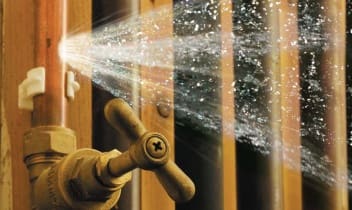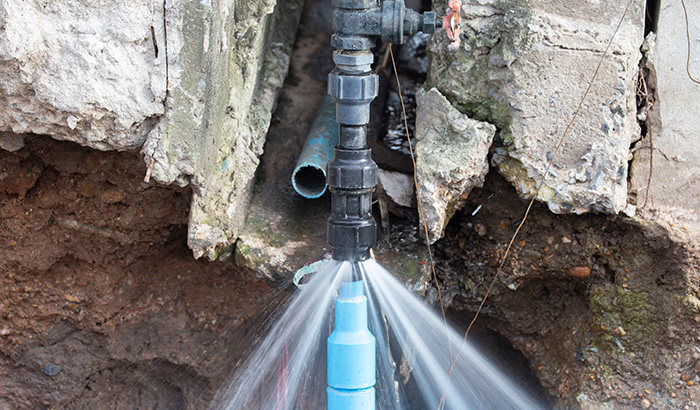What to Do When a Pipeline Bursts: Immediate Tips for Homeowners
A pipeline ruptured can be a homeowner's worst nightmare, resulting in considerable damages if not attended to without delay. The immediate feedback is vital: initially, find the source of the leakage and closed off the primary water shutoff to prevent further flooding. Following this, draining the pipelines becomes essential to reduce extra issues.

Evaluate the Scenario
When a pipeline bursts, the primary step is to examine the scenario quickly. This preliminary analysis is important in establishing the degree of the damage and the possible threats included - burst pipe. Begin by determining the source of the leak; this might involve checking the location around the burst pipe for visible signs of water escape. If the burst happened in a hidden area, such as within a wall or under a flooring, look for water stains or pooling that might indicate the location.
Examine for electrical cables that may be exposed to water, as this poses a significant risk of electrocution. Additionally, take note of any useful things or furniture that may be at risk of water damages.
Recording the damages through pictures can likewise be valuable, especially for insurance coverage claims. Time is important, as standing water can cause mold and mildew growth and further architectural damage. By completely examining the circumstance, you will be better prepared to take the needed actions to minimize further concerns developing from the burst pipeline.
Shut Down the Water
The instant concern after identifying a ruptured pipeline is to shut down the supply of water to avoid further flooding and damage. Situate the major shut-off shutoff, commonly discovered near the water meter, in the cellar, or on an outside wall surface. Turning this shutoff clockwise will quit the circulation of water throughout your home, mitigating the threat of comprehensive water damage.
If you are not able to find the primary shut-off shutoff or if it is malfunctioning, you might need to turn off individual shutoffs attached to the influenced pipe, if available. Some homes additionally have additional shutoffs for certain devices, such as cleaning equipments or dishwashers.
It's recommended to acquaint on your own with the location of these shutoffs before an emergency occurs, as this understanding can save important time during a dilemma. On the occasion that the main shutoff is stuck or tough to turn, do not compel it; rather, take into consideration looking for specialist assistance.
When the supply of water is shut down, take a minute to assess the scenario further while getting ready for the following steps, making certain that your home is as safe as feasible from added water invasion.
Drain Pipes the Pipes
After shutting down the water system, it is necessary to drain pipes the pipes to lessen any type of staying water that might bring about added damages. Begin by opening all faucets in the home, beginning with the highest degree to the most affordable. This procedure urges the water to flow out totally, enabling gravity to aid in eliminating recurring water from the pipes.

Be my latest blog post careful when draining hot water, as it can cause burns. Permit the water to exit until the circulation discontinues. If you notice any remaining water pooling, use towels or a wet vacuum to saturate it up. Properly draining the pipelines is vital to avoid more difficulties and aids safeguard your home from additional water damages during this stressful circumstance.
Contact an Expert
Following a burst pipeline, getting in touch with a professional plumbing technician is crucial to make certain a thorough assessment and reliable fixings. Attempting to take care of the circumstance without skilled assistance can cause more damages and difficulties. A certified plumbing professional possesses the knowledge and specialized devices needed to determine the origin of the leakage and address it effectively.
When selecting a plumbing, focus on those with a solid online reputation and pertinent experience in emergency plumbing services. Checking on the internet reviews, obtaining referrals, and confirming credentials can help you make an informed option. It is suggested to get in touch with multiple professionals to contrast feedback times, approximated costs, and solution offerings.
As soon as you have engaged a plumbing technician, supply them with as much info as possible concerning the occurrence, consisting of the place of the ruptured pipeline and the actions you have already taken. This details will assist them in identifying the problem swiftly and precisely.
Paper the Damages
Once a plumbing has actually been called and the prompt concerns addressed, it is important to record the damage triggered by the ruptured pipe. Begin by taking clear photographs of the affected areas, focusing on noticeable damage to walls, floor covering, and home furnishings.
Next, compile a breakdown of damaged things, including their approximate value and any relevant acquisition information. This stock needs to include irreversible fixtures, individual possessions, and any type of architectural damages observed. Include the approximated price of repairs based on professional assessments or previous quotes for comparable work. if feasible.
In enhancement to written and aesthetic documents, maintain documents of any type of communications with your plumbing technician and insurance carrier. By taking these steps, you will be much better prepared to browse the aftermath of the case.

Final Thought
Immediate analysis of the scenario, adhered to by shutting off the major water supply, is critical. Draining the pipes and documenting the damages guarantees appropriate handling of the event for insurance policy functions.
The instant concern after determining a ruptured pipe is to close off the water supply to protect against further flooding and damages. Turning this valve clockwise will certainly stop the flow of water throughout your home, mitigating the threat of substantial water damage.
After shutting off the water supply, it is vital to drain the pipelines to reduce any type of continuing to be water that could lead to extra damage. For homes why not try these out with a go to these guys warm water heating system, you need to additionally drain the container by linking a hose to the drain shutoff and directing the water into an appropriate container or outside.
Effectively draining pipes the pipelines is important to protecting against further difficulties and aids safeguard your home from added water damage throughout this stressful situation.